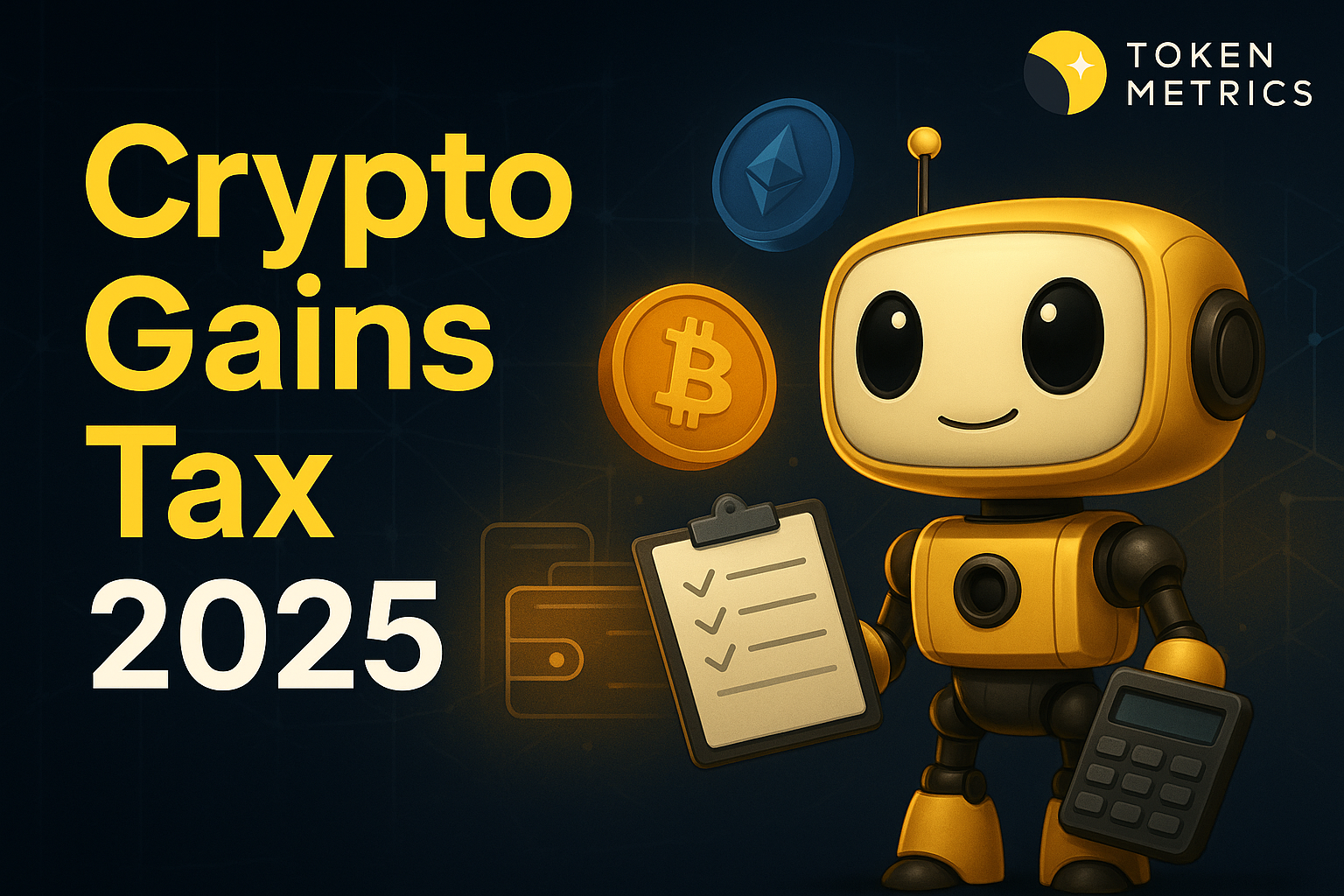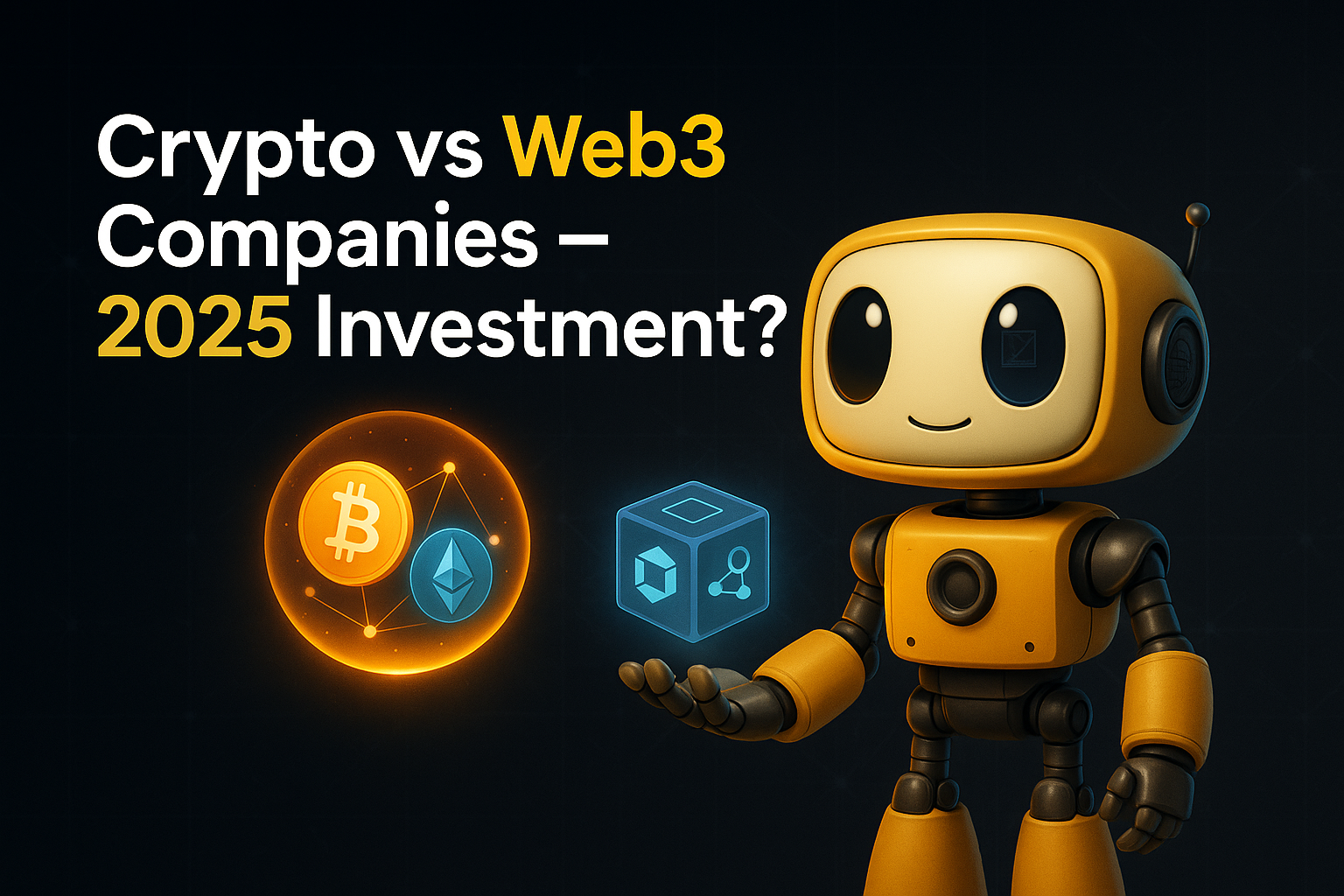As cryptocurrency becomes increasingly mainstream, knowing how do I calculate capital gains on crypto is essential for every investor. The IRS treats cryptocurrency as property rather than currency, meaning each trade, sale, or purchase of crypto triggers a taxable event that must be carefully documented. This means that cryptocurrency is taxed similarly to other forms of property, with gains and losses reported for each transaction. This article serves as a comprehensive crypto tax guide, helping you understand how to accurately calculate your crypto capital gains so you can manage your tax bill effectively and avoid costly compliance issues.
Understanding Crypto Capital Gains Basics
Capital gains on cryptocurrency arise when you sell, trade, or spend your crypto for more than you originally paid. At its core, the calculation is straightforward: your proceeds (sale price) minus your cost basis (purchase price) equals your capital gain or loss. These gains are subject to crypto capital gains tax. However, the reality is far more complex, especially for active traders who manage multiple positions across various exchanges and wallets.
The IRS distinguishes between short-term capital gains and long-term capital gains based on how long you hold your crypto assets. If you hold your cryptocurrency for one year or less, any gains are considered short-term and taxed at your ordinary income tax rates, which range from 10% to 37% depending on your total taxable income. Conversely, assets held for more than one year qualify for preferential long-term capital gains tax rates of 0%, 15%, or 20%, based on your income and filing status. How crypto is taxed depends on the holding period and whether the gain is classified as short-term or long-term, so understanding how crypto taxed applies to your transactions is essential. This distinction can create significant tax planning opportunities for investors who strategically time their sales.
To calculate crypto capital gains accurately, you need three critical pieces of information for each transaction: your cost basis, your proceeds, and your holding period. Your cost basis is the original purchase price of your crypto, including any transaction fees directly related to the purchase. Proceeds are the amount you receive when you dispose of the crypto, minus any fees related to the sale. The difference between your proceeds and cost basis is your taxable gain, which is the amount subject to capital gains tax.
For example, imagine you bought 1 Bitcoin in June 2024 for $70,000 and sold it four months later for $80,000. Your capital gain is $80,000 minus $70,000, or $10,000. This $10,000 is your taxable gain and must be reported for bitcoin taxes. Since you held the Bitcoin for less than a year, this gain is short-term and taxed at your ordinary income tax rate. If your annual income is $85,000, your total taxable income becomes $95,000, placing you in the 24% federal tax bracket for 2024. This means you owe approximately $2,400 in federal taxes on that gain.
If you instead held the Bitcoin for 13 months before selling, the $10,000 gain qualifies for long-term capital gains treatment. With the same income, your tax rate on the gain would be 15%, resulting in a $1,500 tax bill—a $900 savings just by holding the asset longer.
Why Crypto Tax Calculations Get Complicated
While the basic formula seems simple, real-world crypto investing introduces many complexities. Take Sarah, an investor who bought Bitcoin at various prices: $5,000, $10,000, $15,000, and $20,000. When she sells part of her holdings, which purchase price should she use to calculate her cost basis?
This question highlights the importance of selecting a cost basis method. The IRS permits several approaches: FIFO (First In, First Out) uses the oldest purchase price; LIFO (Last In, First Out) uses the most recent purchase price; and HIFO (Highest In, First Out) uses the highest purchase price to minimize gains. These are all different cost basis methods, and the accounting method you choose can significantly affect your tax liability.
Complications also arise from trading on multiple exchanges and moving crypto between different wallets. Most investors don’t stick to one platform—they might buy on Coinbase, trade on Binance, stake on other platforms, and transfer assets between wallets. Each platform maintains separate transaction records, and consolidating these into a complete transaction history is like assembling a complex puzzle. Tracking your crypto cost basis for each asset is crucial, especially when dealing with multiple transactions across different platforms.
Taxable Events Beyond Simple Sales
Calculating capital gains on crypto involves more than just selling for fiat currency. Several other actions involving digital assets are considered taxable events from a tax perspective, each representing a type of crypto transaction:
- Trading one cryptocurrency for another (e.g., swapping Bitcoin for Ethereum) is a crypto trade and triggers capital gains taxes, requiring you to calculate gains on the disposed digital asset.
- Selling crypto for fiat currency is a crypto transaction that counts as a disposal event. For tax purposes, you must calculate the difference between your cost basis and the fair market value of the digital asset at the time of the transaction.
- Spending crypto on goods or services is another form of crypto transaction and counts as a disposal. You must calculate the difference between your cost basis and the fair market value at the time of the transaction.
- Receiving cryptocurrency as crypto income—from mining rewards, staking, airdrops, or employment compensation—creates ordinary income taxable at your income tax rate. The fair market value at receipt establishes your cost basis for future capital gains calculations.
You owe capital gains tax whenever you dispose of or convert digital assets through these types of crypto transactions. The tax treatment of each event depends on the nature of the transaction, and the IRS provides specific guidance on how to report and classify these activities.
Not all crypto activities generate taxable events. Simply buying and holding digital assets doesn’t trigger a tax bill until you dispose of them. Transferring crypto between your own wallets is also non-taxable, though keeping detailed records of these crypto transactions is vital to track your cost basis accurately. Additionally, gifting crypto under the annual gift tax exclusion (set at $19,000 per recipient for 2025) doesn’t create taxable gains for the giver, but the recipient inherits the giver's cost basis (the original purchase price and acquisition date) for tax purposes. Proper documentation of the giver's cost basis is important for future tax reporting. The tax treatment of gifts and other crypto transactions should always be considered from a tax perspective to ensure compliance.
Crypto Income and Tax Implications
Crypto income encompasses a range of earnings from activities like mining, staking, airdrops, and earning interest through crypto lending platforms. For tax purposes, the IRS treats all these forms of crypto income as ordinary income, meaning they are taxed at your regular income tax rates based on your total taxable income. The key factor in determining your tax bill is the fair market value of the crypto assets at the time you receive them. For example, if you receive $1,000 worth of Bitcoin as a mining reward, you must report that $1,000 as taxable income on your tax return for the year.
Accurate reporting of crypto income starts with maintaining a complete transaction history. You should record the date, time, amount, and fair market value of each crypto asset received. This information is essential for calculating your tax liability and ensuring your tax return is accurate. Using tax software or a crypto tax calculator can greatly simplify this process by automatically importing your transaction data from exchanges and wallets, calculating your gains and losses, and generating a comprehensive tax report.
Beyond mining and staking rewards, other types of crypto income—such as interest from lending platforms or profits from trading—are also subject to crypto tax. Each of these activities can have unique tax implications, so it’s wise to consult a tax professional or use specialized tax software to ensure you’re following IRS rules and reporting all taxable income correctly. By understanding how crypto income is taxed and taking steps to accurately calculate and report it, you can avoid unexpected tax bills and minimize your overall tax liability.
Leveraging Token Metrics for Accurate Tracking
Given the complexities of calculating crypto capital gains across multiple exchanges, wallets, and hundreds of transactions, having robust tracking tools is essential. This is where Token Metrics, a leading crypto trading and analytics platform, comes into play.
Token Metrics provides comprehensive portfolio tracking by aggregating your positions across exchanges and wallets, giving you real-time visibility into your entire crypto portfolio. This unified view simplifies the daunting task of compiling transaction records from disparate sources—a critical first step in accurate tax calculation. Organizing your transactions by tax year is essential for proper reporting and ensures you meet IRS deadlines for each tax year.
Beyond tracking, Token Metrics offers advanced analytics that empower investors to make tax-efficient trading decisions year-round, rather than scrambling during tax season. By understanding your current cost basis, holding periods, and potential tax implications before executing trades, you can optimize timing to minimize your tax liability. The platform’s insights help you plan around the one-year holding period that distinguishes short-term from long-term capital gains rates.
For active traders with complex portfolios, Token Metrics provides detailed performance attribution and reconstructs your cost basis accurately. Its reporting features generate comprehensive documentation to support your tax calculations, which is crucial for IRS compliance and audit defense. Token Metrics helps users report crypto transactions accurately and assists in reporting crypto gains for tax compliance, making it easier to meet regulatory requirements.
Token Metrics also aids in identifying opportunities for tax-loss harvesting, a strategy where you sell depreciated assets to realize losses that offset capital gains. By clearly showing which positions are underwater and by how much, the platform enables strategic loss realization that reduces your overall tax bill while maintaining your desired market exposure. Tools like Token Metrics are invaluable for managing cryptocurrency taxes and streamlining the entire tax preparation process.
Resolving Missing Cost Basis
Missing cost basis is a common challenge for crypto investors, especially those who have been active in the market for several years or have moved assets between multiple wallets and exchanges. The cost basis is the original purchase price of your crypto asset, including any transaction fees. Without this information, it becomes difficult to accurately calculate your capital gains or losses when you sell, trade, or otherwise dispose of your crypto.
To resolve missing cost basis, start by gathering as much information as possible about the original transaction. Check your exchange records, wallet transaction histories, and any other documentation that might indicate the purchase price, date, and amount of the crypto asset. If you’re unable to locate the original purchase price, some tax software can help estimate your cost basis based on available transaction records. However, using an estimated cost basis can be risky, as the IRS may scrutinize these calculations during an audit.
Maintaining accurate and complete transaction records is the best way to avoid missing cost basis issues in the future. Tax software like Token Metrics can help you track and calculate cost basis for each crypto asset, generate a detailed tax report, and ensure you’re prepared for tax season. If you’re unsure about how to calculate cost basis or need to estimate it due to missing information, consulting a tax professional is highly recommended. By resolving missing cost basis issues and keeping thorough records, you can accurately calculate your capital gains, comply with IRS rules, and minimize your tax liability.
Tax-Loss Harvesting and Strategic Planning
There are a few strategies you can use to reduce your tax bill when dealing with cryptocurrency. These include tax-loss harvesting, holding assets for long-term gains, and careful planning of your transactions.
Capital losses can be a powerful tool for managing your tax bill. You can use capital losses to offset capital gains dollar-for-dollar, lowering your taxable income. If your losses exceed your gains, you can deduct up to $3,000 of net capital loss against ordinary income each year, with remaining losses carrying forward to future tax years.
Savvy investors practice tax-loss harvesting throughout the year, especially during market downturns. This approach is similar to strategies used for traditional investments like stocks. By selling depreciated positions to realize losses, they generate tax deductions and may repurchase similar assets to maintain exposure. It’s important to note that the IRS wash sale rule, which disallows losses on securities repurchased within 30 days, currently does not apply to cryptocurrency, though proposed regulations could change this.
You are required to pay taxes on gains from crypto activities, including trading, selling, or spending your crypto. Holding crypto for over a year before selling can substantially reduce your tax liability. The difference between ordinary income tax rates (up to 37%) and long-term capital gains rates (max 20%) can save tens of thousands of dollars on large gains. Patient investors who plan their sales strategically can significantly lower their tax liability.
If you mine cryptocurrency or operate as a self-employed individual, you may also be subject to self employment tax, which includes social security contributions, in addition to income and capital gains taxes.
Record Keeping and Reporting Requirements
Starting in 2025, cryptocurrency exchanges are required to report your transactions and wallet addresses directly to the IRS, making meticulous record keeping for all your digital assets more important than ever. You must maintain detailed documentation including transaction dates, amounts, fair market values at transaction time, involved parties, and the purpose of each transaction.
For tax reporting, you’ll use IRS Form 8949 to report your capital gains and losses, transferring totals to Schedule D. Income from mining, staking, or business activities, such as operating a crypto mining business, is reported on Schedule 1 or Schedule C. Due to the complexity of these forms, many investors rely on tax preparation software or consult a tax professional to ensure accuracy.
Platforms like Token Metrics simplify this process by maintaining a complete transaction history and providing organized reports ready for tax filing. Instead of manually reconstructing hundreds or thousands of transactions from multiple exchanges and wallets, you get centralized, accurate records that streamline your tax return preparation.
State Taxes and Additional Considerations
Federal taxes are only part of your overall tax obligation. Depending on your state of residence, you may owe additional state taxes on your crypto gains. States such as California, New York, and New Jersey impose significant taxes on investment income, while others like Texas, Florida, and Nevada have no state income tax. Your total tax liability is the sum of your federal and state obligations, so it’s important to understand your local tax rules.
Conclusion
Learning how do I calculate capital gains on crypto is crucial to managing your cryptocurrency investments responsibly and minimizing your tax burden. Calculating capital gains requires understanding IRS rules, maintaining detailed records, selecting appropriate accounting methods, and planning around holding periods and loss harvesting.
The complexity of cryptocurrency taxation, especially for active traders, makes reliable analytics and reporting tools indispensable. Token Metrics offers the comprehensive tracking, analysis, and reporting capabilities you need to navigate crypto taxes confidently. Its real-time portfolio visibility, accurate cost basis calculations, and tax-efficient trading insights transform the daunting task of crypto tax compliance into a manageable process.
As IRS enforcement intensifies and cryptocurrency tax regulations evolve, having sophisticated tools and accurate data becomes more valuable than ever. Whether you’re a casual investor with a few transactions or an active trader managing complex portfolios, understanding how to calculate capital gains correctly—and leveraging platforms like Token Metrics—protects you from costly errors while optimizing your tax position.�00d





.svg)


.png)




%201.svg)
%201.svg)


%201.svg)









.svg)




.png)